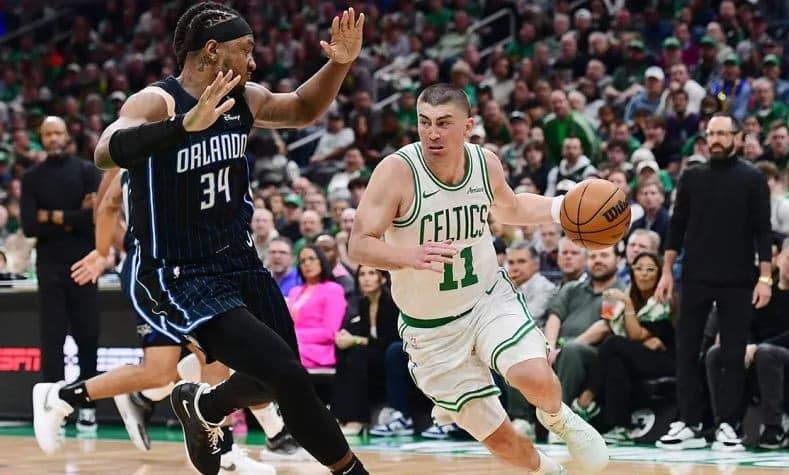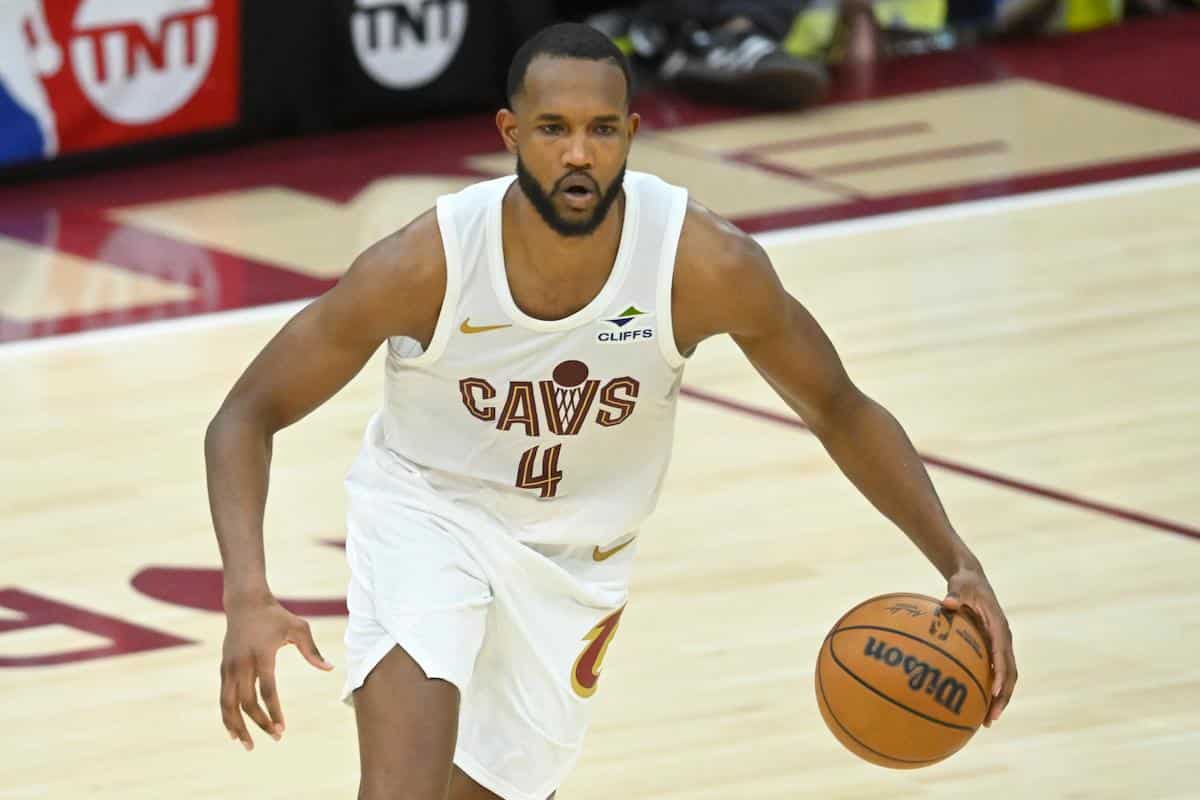Welcome back to installment #2 of Giving Flowers, a series where we dive into the intricacies behind a dominant Celtics title run. This series can be consumed in any order, but you may enjoy starting with the introductory piece on Jaylen Brown.
On the docket today is an NBA champion, gold medalist and without a doubt, the best shot blocking guard in the NBA. Please join me in a round of applause for Derrick White.
Derrick is the king of doing all of the little things that contribute to winning, but don’t always find their way on the stat sheet. That’s not to say he doesn’t do his fair share of stat sheet stuffing. He’s not ½ of the Stock Exchange for nothing!
Pool Photo-Imagn Images
White has a genuine gift as a shot blocker. There are countless times where he makes a play that never feels possible. He’ll block a center that’s backing him down, swat a speedy guard looking to shake him in isolation, or rotate to meet a bouncy wing at the rim.
There are a ton of nuances to Derrick’s ability, you don’t just luck into the type of production he’s had stacking up rejections. Here’s a fun fact: According to StatMuse, Derrick White is currently 22nd all-time in blocks by a guard with 366. On that list, he sits between Russell Westbrook and Magic Johnson, despite playing 744 and 456 fewer games than them respectively. A similar level of output this season could see him join his colleague Jrue Holiday in the top-15.
Narrowing the scope a bit, I want to shine some light on White’s brilliance in one specific aspect of his shot blocking ability: the rearview contest. If you’re not familiar with the term, it’s pretty much exactly what it sounds like.
Picture this: You’re attempting to switch lanes on the highway. You’ve checked your mirrors, now it’s time to make the move. The moment you begin to creep over, a driver appears out of nowhere and they’re honking at you, unrelenting and longer than it should be. They were hiding in your blind spot, but you probably should’ve looked over your shoulder.
Derrick White doesn’t honk:
A rearview contest becomes especially useful in pick-and-roll scenarios where the defense is in drop coverage. The goal–and potential weakness–of that particular coverage is that it forces teams to lean on pull-up jump shots. Now there are matchups, and sometimes players, that thrive on these exact looks. If you catch them on a hot shooting night, it is not fun to deal with.
By trailing behind in the shooter’s blind spot, Derrick is able to take a ton of those chances off the table. He is incredibly good at avoiding contact as well, which is always a risk when attempting to chase players over the screen. If you were around for the Isaiah Thomas years, you know how advanced players can be at drawing contact on those plays as well.
Along with his strength as a ball screen navigator, White seems uniquely comfortable making plays while in pursuit. This translates to a ton of chase down blocks and recoveries. He doesn’t just block the shot either, he’s usually in the air long before the offensive player even knows they’re going to shoot.
It’s this kind of anticipation and timing that puts him in the upper echelon of defenders. Some players are reactionary, making decisions as the play unfolds. Derrick is nearly clairvoyant. That doesn’t give enough credit to his work in the film room though. He clearly has a great understanding of the scouting report and his opponents’ tendencies in order to be this consistent.
The rearview blocks aren’t all the same either. He emerges from a different angle depending on the shooters form, height and location on the court. White manages to get a hand on the top of the ball while being directly behind 6’8” Paul George:
There’s a special amount of ambidexterity involved as well. He comes from the side of Steph Curry to block the three-pointer with his left hand here.
This next one is just flat out absurd. Patty Mills has a quick trigger, and Bam Adebayo sets screens that are… tough to get around. Facing a combination like that, White is left with very little time to react. Rather than waste a fraction of a second adjusting himself to line up with Mills, he simply jumps while facing backwards. He manages to get the ball cleanly without even a trace of contact to the shooter’s body.
Targeting the ball this effectively is not normal, and in most cases the best you’re hoping to do is distract the shooter a bit. Occasionally, Derrick might actually put himself in a less favorable/visible position to bait players into believing he won’t recover. Back to the car analogy, that’s pretty much like someone intentionally driving around tailgating cars in their blindspots.
Even Jrue Holiday—who sits 11th all-time in blocks by a guard—does not make this type of play with regularity. Jrue excels at keeping the ball in front defensively, and he always wants to beat you to the spot. Derrick wants you to think you can get to your spot first, before sneaking up behind and making a play you never saw coming.
To borrow from Joe Mazzulla’s bag, Derrick displays pursuit predation on this possession. He resembles a cheetah that is stealthily stalking its prey, waiting for the perfect moment to strike.
White has been by all accounts one of the best guard defenders in the NBA since arriving in Boston. He was quite good in San Antonio as well, but being surrounded by a team full of capable defenders has helped establish him as a household name. After collecting consecutive All-Defensive Second Team nominations, it’s time for voters to understand the full picture before submitting their ballots again.
Derrick is an elite defensive playmaker, and does things that few other guards would even think to try. He not only solves problems as they happen, but plugs up holes that the offense hasn’t even explored yet. The rearview contest is another example of his creativity and technical mastery when it comes to covering up mistakes. White-Out, if you will.
Did Derrick White and the Celtics invent the maneuver? No, it’s been around. But if you made a top-5 list of the best at it in the league, Derrick might just show up five times.





